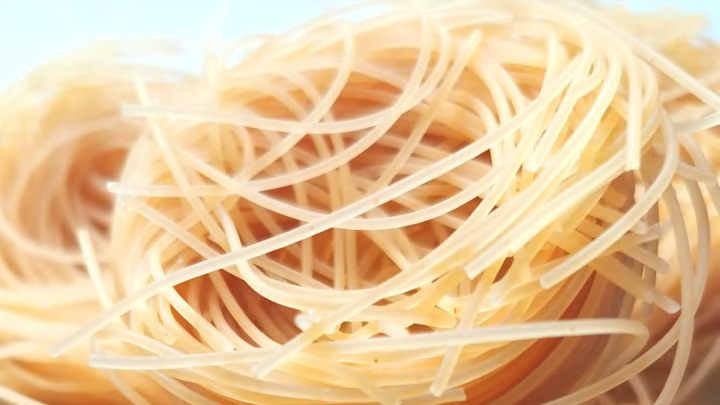Scientific advancements come in many forms. Sometimes, it’s a new type of rocket or a novel treatment for cancer. Other times, it’s the world’s thinnest strand of spaghetti.
Researchers in London recently announced their achievement in the journal Nanoscale Advances. At 372 nanometers, which is roughly 200 times thinner than a human hair and even narrower than some wavelengths of light, the noodles are invisible to the naked eye and even to standard equipment. You’d need a scanning electron microscope to take a look at it.

It’s possible through a process known as electrospinning, where flour and formic acid is drawn through the tip of a needle by an electric charge. It’s similar to extrusion, or pulling pasta dough through perforated holes—just on a microscopic level.
The University College London-led team are not gastronomes, and contributing to the Olive Garden menu is not their goal. Instead, the work is part of an initiative toward creating nanofibers that have medical applications, including assisting in wound healing, bone regeneration, and drug delivery.
“Nanofibers, such as those made of starch, show potential for use in wound dressings as they are very porous,” co-author Gareth Williams said in a statement. “In addition, nanofibers are being explored for use as a scaffold to regrow tissue, as they mimic the extra-cellular matrix—a network of proteins and other molecules that cells build to support themselves.”
Making medical pasta is just one step. The researchers will next look at the durability of the substance and whether it can be produced on a mass scale.
Could you still eat it? Probably not. Owing to its dimensions, applying heat isn’t likely to yield the desired results. “I don’t think it’s useful as pasta, sadly, as it would overcook in less than a second, before you could take it out of the pan,” Williams said. But despite not being kitchen-friendly, the fact it's made from extruded flour does qualify it as pasta.
Incredibly thin spaghetti is not a novel concept. A pasta maker in Sardinia developed su filindeu, or “threads of God,” which is about 400 microns wide, or half the size of angel hair pasta. Making it is a specific skill that only a single family in Sardinia has mastered—and yes, it’s edible.
